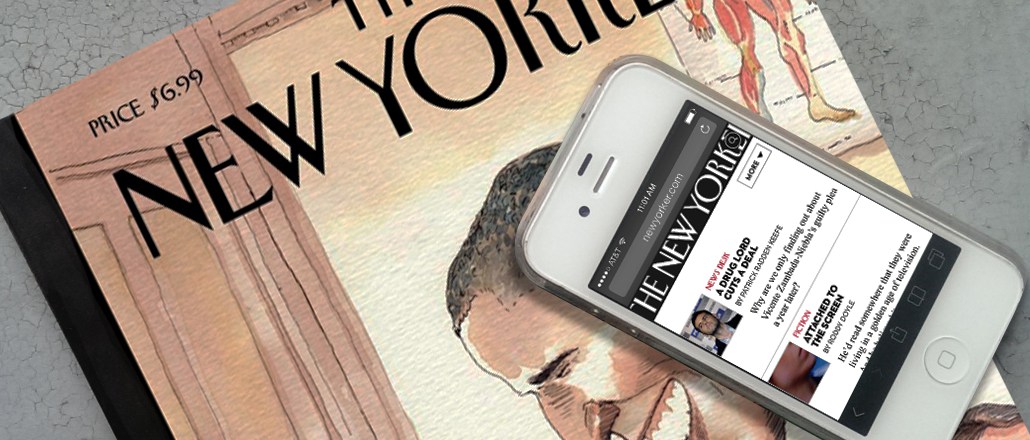‘We’re not afraid of emoji’: How the New Yorker speaks Snapchat

In adapting its brand to Snapchat, not even the 91-year-old New Yorker is above using an emoji here and there.
Since launching its Snapchat efforts a year ago, The New Yorker has experimented with how to most effectively bring its brand, values and overall aesthetic to the messaging app. On paper, it feels like an odd pairing. Where The New Yorker’s stodgy print brand has been built on long reported pieces and literary criticism, Snapchat is all about quick content consumption, video rather than text, and, yes, emojis.
But The New Yorker’s approach to Snapchat has been to focus less on where its brand doesn’t fit and more on where it does. This means focusing heavily on the brand’s visual elements, such as its cover, cartoons and the people behind the bylines, said Nick Thompson, editor of NewYorker.com.
“We’re not going to be telling a 20,000-word story on Snapchat, but the same things that inform those stories will inform how we approach that platform,” he said. “We’re trying to take what’s essential to our brand and bring it there.”
At the same time, the magazine isn’t shying away from speaking the language of Snapchat itself. In adapting to the Web, The New Yorker has had to tweak its formula for the reading habits of online readers. It’s taking a same all-in approach to Snapchat, where it regularly uses emojis and many of the platforms other visual elements and features. “We’re not afraid of emoji,” said Thompson. “But we haven’t worked out our emoji policy with the copy editors. We’re looking forward to that conversation.”
The New Yorker has already made headway when it comes to attracting younger readers. Millennials make up 42 percent of the magazine’s online audience, up from 36 percent a year ago. NewYorker.com reached 11.4 million unique readers in January, up 30 percent from the year before. (All data according to comScore.)
The New Yorker, while not a Snapchat Discover publisher, has still made a concerted effort to create consistent programming on the platform. Much of its Snapchat strategy is built around giving Snapchat followers a look at what goes on behind the scenes at the magazine and website.
Each week, usually on Monday or Tuesday, cover editor Françoise Mouly reveals the next issue’s cover, along with background details about the cover’s inspiration and creation. On Wednesdays, cartoons assistant Colin Stokes quizzes New Yorker cartoonists on their work. He’s also helped bring The New Yorker cartoon caption contents to Snapchat, which the magazine uses to both solicit captions and announce contest winners. NewYorker.com film critic Richard Brody makes his appearance on Friday to offer his Snapchat-sized movie reviews, which he gives as he walks around The New Yorker’s office.
Thompson wouldn’t detail exactly how successful the brand has been in growing its audience on Snapchat, though he did say that the magazine’s follower count “is increasing at a solid rate” over the last year.
Like fellow legacy media brands including CNN and The Wall Street Journal, The New Yorker sees Snapchat as a viable way to not only reach a young audience that hasn’t been exposed to its brand but also as another place to experiment in applying its brand to new platforms. Where that experimentation ultimately goes is still not clear, though. Snapchat has yet to let non-Discover publishers monetize their Snapchat stories. And the audience journey from New Yorker Snapchat follower to New Yorker magazine subscriber still feels more theoretical than real.
But those kinds of open questions, which are common among publishers embracing new platforms, should not prevent publishers from trying new things, said Nick Cicero, CEO of Snapchat creator network Delmondo.
“Marketing in tech today, even if you’re a publisher, is all about experimentation. The people willing to experiment with new tech and platforms and taking small risks are going to see those bets paid off more than not,” he said.
More in Media

With Firefly Image 3, Adobe aims to integrate more AI tools for various apps
New tools let people make images in seconds, create image backgrounds, replacing parts of an image and use reference images to create with AI.

Publishers revamp their newsletter offerings to engage audiences amid threat of AI and declining referral traffic
Publishers like Axios, Eater, the Guardian, theSkimm and Snopes are either growing or revamping their newsletter offerings to engage audiences as a wave of generative AI advancements increases the need for original content and referral traffic declines push publishers to find alternative ways to reach readers.

The Guardian US is starting its pursuit of political ad dollars
The Guardian US is entering the race for political ad dollars.





